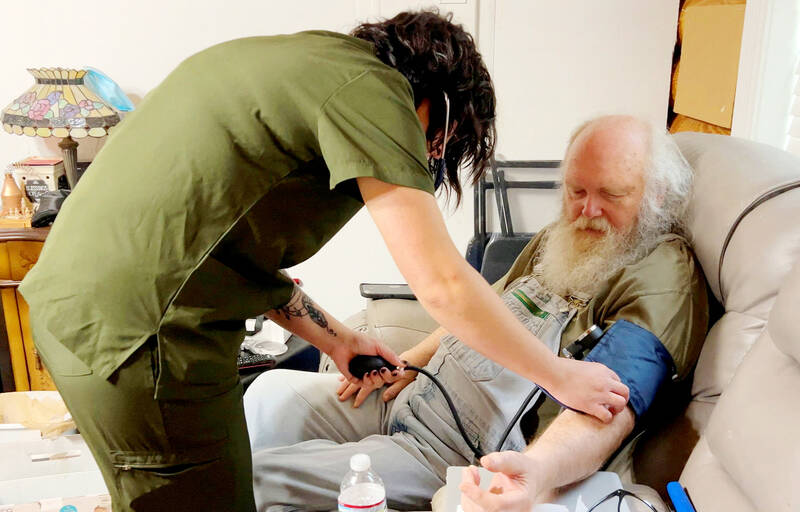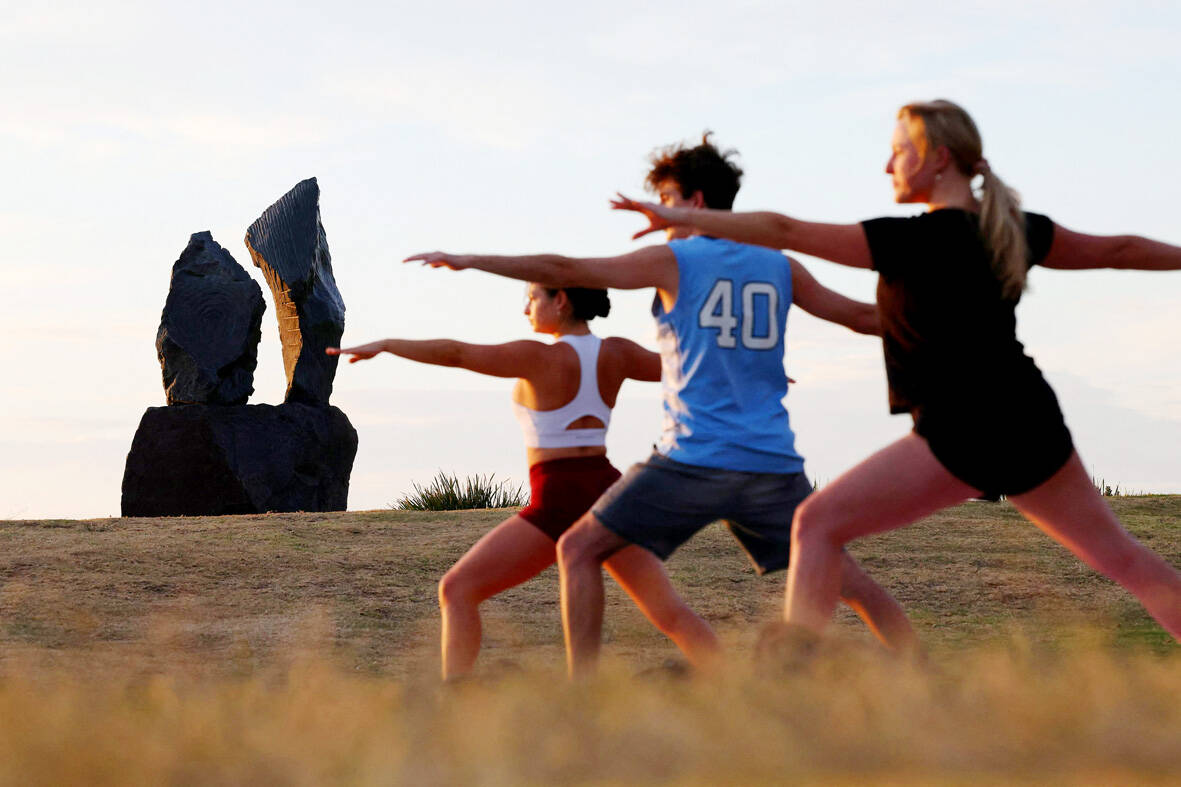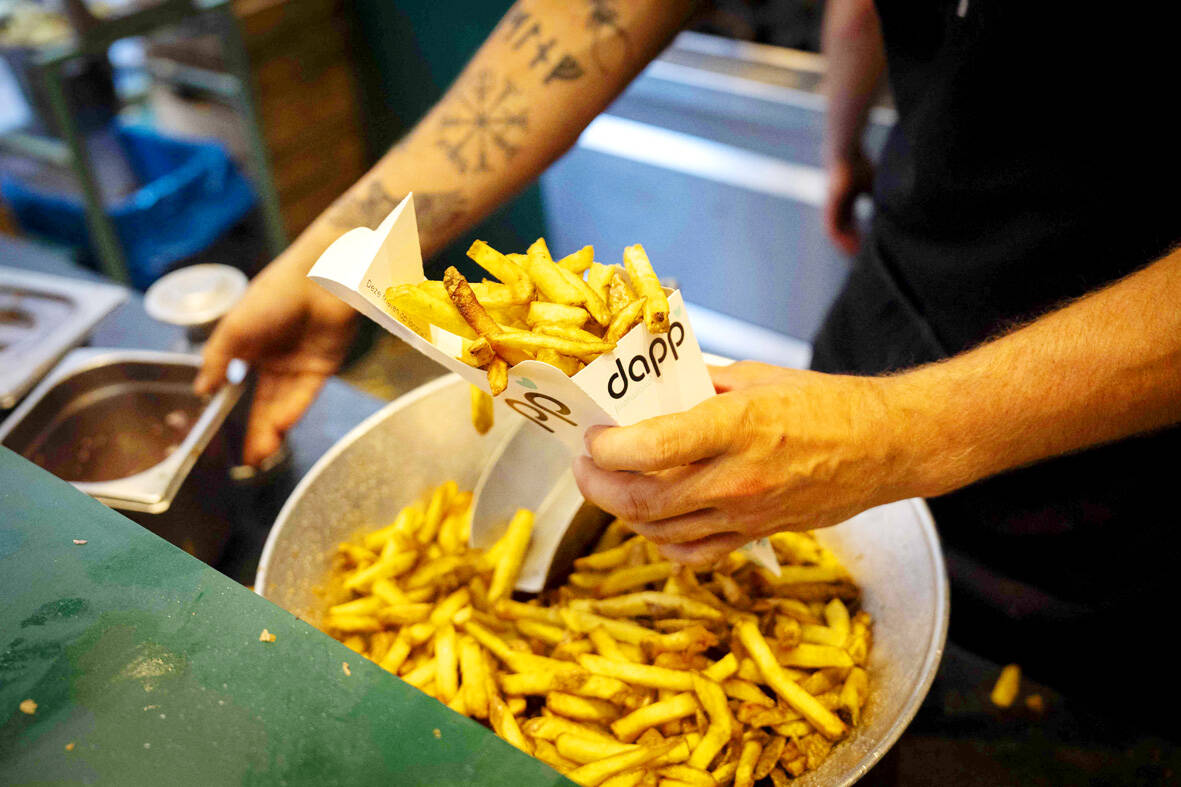The older you get, and the more obsessed with your health, the more it feels as if life comes down to numbers: how many more years you can expect; your lean body mass; your percentage of visceral fat; how dense your bones are; how many kilos you can squat; how long you can deadhang; how often you still do it; your levels of LDL and HDL cholesterol; your resting heart rate; your overnight blood oxygen level; how quickly you can run; how many steps you do in a day; how many hours you sleep; how fast you are shrinking; how often you get up to pee.
I say you, of course, but what I mean is me. I fixate on all those things and more. Do you want to know my vascular age as calculated by my smart scales? I will tell you. The point is that some of these numbers matter more than others. And one that definitely belongs in the you-should-give-a-toss column is blood pressure (BP).
If this gets too high for too long, the strain will weaken and narrow your arteries and other blood vessels, damage your internal organs and encourage blockages, bulging, bleeding and bursts. Next stop, heart attack or heart failure, stroke, kidney failure, vision problems or dementia. And unless you measure your blood pressure, you may not know it’s a problem. That’s why it’s often described as a silent killer.

Photo: Reuters
Low pressure is no joke either. But because it will make you dizzy and possibly even faint, you’re more likely to realize something’s up.
NUMBERS GAME
Now 62, I’ve had high blood pressure, AKA hypertension, since at least my early 50s — probably much longer given that alcohol, stress and excess weight are risk factors and I spent half of my life as a worried, bloated drunk. So I take medicine every day — one little capsule of ramipril, originally 5mg and now 2.5mg. This is an unremarkable sort of dose: the most that’s usually prescribed is 10mg.

Photo: Reuters
That’s right: numbers again. And there’s more where those came from. Such as: hypertension is responsible for more than 10 million deaths a year. Globally, according to the WHO, there are almost 1.4 billion adults with it, and more than 600 million are not getting treatment, either because they don’t know they need it or they don’t want it. This killer is not just silent but ignored.
In the developed world at least, no one can say this is because it’s difficult to get a test. In the UK, every doctor’s surgery and pharmacy will have at least one sphygmomanometer. No one calls it that, of course — it’s just a “blood pressure monitor” — and you’ll know one when you see one: a cuff that wraps around your upper arm, connected by a tube to a machine that inflates it and takes your reading, usually throwing in your pulse at the same time.
Testing takes about 10 minutes if it’s done properly (which it often isn’t — but more about that later). You will get your results immediately.

Photo: AFP
What do those results mean, though? So long as everything’s broadly OK, you may not get much of an explanation. This is probably because doctors and practice nurses have tried to explain it in the past and seen patients’ eyes glaze over. This stuff is important but also dull. Still, here are the basics.
WHAT IS BLOOD PRESSURE?
Blood pressure is always expressed as two numbers: systolic pressure, or the force exerted within your arteries as the heart is contracting to pump blood round your body, and diastolic, or the pressure recorded while it is relaxing and filling. Systolic is higher than diastolic (obvious, when you think about it) and always listed first; the two numbers are separated by a slash in writing (115/75, say), or by “over” in speech (“115 over 75”).
There is some fuzziness about what constitutes ideal blood pressure, with the range varying slightly from country to country. In the UK, the NHS defines “normal” or “healthy” BP as between 90/60 at the low end and 120/80 at the high. “Slightly raised” BP (sometimes known as “high normal” or “elevated”) ranges from 121/81 to 134/84 and “high” BP starts at 135/85. This is the point at which your doctor is likely to offer you medication or give you a serious talk about your lifestyle.
If it hits 180/120 you are, if you’ll excuse the medical jargon, in deep shit. This is hypertensive crisis territory, AKA severe hypertension. At the very least, you should get straight on the phone to your doctor. If you’re also experiencing symptoms such as chest pain, breathlessness or confusion, head to the emergency.
Let’s back up a bit, though. Remember I said that high BP starts at 135/85? That’s if you’re measuring it at home. In a medical setting, it begins at 140/90 to allow for the so-called “white coat effect” — the tendency of readings to be higher because they are in a stressful context or (though this is less often acknowledged) rushed.
Ideally, you should have been sitting peacefully for five minutes before your blood pressure is taken, with your feet on the ground, your back supported and your forearm resting on something like a table, so it’s about heart-high. Once the cuff is placed around your upper arm, it should be inflated three times, and a reading taken each time. The first reading should be discarded, then the other two averaged to give a final result.
Is it really worth it? Let’s put it this way. My blood pressure mostly hovers just over or under the 120/80 level. As I was having my photo taken for this article, with a sphygmomanometer lying around, I thought I’d take a quick reading. No time to relax, poor posture, a reasonable amount of stress … bish bosh. My systolic pressure was well over 150.
‘BODY SCAN’
And it’s not the most hardcore approach to measurement. I went for an extremely thorough “body scan” at Neko Health, a Swedish-British company that specializes in preventive healthcare. As well as having my moles checked, my cholesterol measured, my grip tested etc, I was fitted with not one but four pressure cuffs – one on each arm and leg. Sam Rodgers, Neko’s lead doctor for the UK, explains that this is partly meant for repeat users, so Neko can track how the blood supply to each limb changes over time. But he started out as an NHS GP, and still works as one. “Ideally,” he says, “you would be looking at the blood pressure in both arms to see if there’s any significant difference, then taking the reading from the arm with the higher reading so you don’t miss any cases of high blood pressure.”
So what figures should you be aiming for? Just because doctors are only likely to intervene once you pass 135/85 or 140/90, that doesn’t mean you shouldn’t try to get below 120/80. Pre-hypertension, as the zone between “normal” and “high” is sometimes called, is not entirely without risk, and obviously this increases as your pressure rises. Rodgers compares the concept to “pre-diabetes,” where doctors increasingly recognize the value of early intervention. Some countries, such as the US, take a more aggressive approach than the UK.
Don’t forget that blood pressure fluctuates, adds Sabine Donnai, a consultant and the founder of the London longevity clinic Viavi. Not only does it typically dip at night, but it can spike as a result of stress, exercise and other factors. The lower your base level, Donnai says, the less dangerous those spikes are likely to be: “Ideally we want systolic pressure to be anything between 100 and 120.”
“Your blood pressure is not high all the time,” is how she puts it. “You go to your GP or the pharmacy and your blood pressure is absolutely fine. Then, just after some caffeine or alcohol or stress — or excitement even – suddenly your blood pressure shoots up. That’s when you could get a stroke or a heart attack.”
What with the spikes and everything, I’d like to lower my BP a little. Maybe I could even reach a point where I don’t need medication? When I suggest the possibility to Rodgers, however, he smiles and says he’s a little jealous of me. As well as reducing the likelihood of heart attacks and strokes, he says, “Ace inhibitors” such as ramipril can protect the kidneys. This goes beyond simply countering the damage done by hypertension.
Either way, lifestyle changes can definitely reduce BP. For a start, if you smoke or drink, you should give up or at least cut down. I don’t do either — so no room for improvement there. If you’re overweight or have obesity, losing weight may also reduce hypertension. But here again, my wriggle room feels limited. At 1.77 meters and 80kg, I already weigh 30kg less than I once did.
And in any case, all this advice is terribly generic. It’s the stuff you should already be doing if you want a long, healthy, happy life.
SALT
Salt is less widely discussed.
“Everyone was sort of politely ignoring it until recently,” says Rodgers. “And that includes doctors. We weren’t great at asking patients about it. And most of us oversalt our food, or have a lot of salty packaged or restaurant food. If you’ve got a high intake of salt and you reduce it, you can achieve a 5mmHg to 10mmHg drop in blood pressure.”
The usual advice is for adults to have no more than 6g of salt a day, or about a level teaspoon. This includes the salt that’s already in processed food and the salt added during and after cooking.
I thought I might make some headway here. Then I tracked my diet for a week, including every single pack of crisps and Mini Cheddar. Most days I’m already under 6g.
STRESS
Stress seems more promising. Alongside the ambulatory blood pressure monitor, Wreaves fitted me with a sensor to measure my heart rate variability, often used as a guide to fitness and resilience. The idea was to get some insights into my nervous system, especially the balance between the sympathetic side, which governs the body’s fight-or-flight response, and the parasympathetic, or rest-and-digest.
After 72 hours of monitoring, Donnai was not impressed.
“You’re stuck in a sympathetic drive throughout the day,” she tells me. In other words, my body is focusing on fight or flight. “You might think that’s normal because you’re at work and you’re busy. But even in the evening and the night, when you’re supposed to be relaxing, there’s very little recovery. It seems to me that you don’t have enough calm in there. Your system doesn’t recognise when it needs to switch off. There is a lot of stress that is uncompensated for.”
How to fix that? Donnai recommends meditation, yoga and breathwork. I already do all of this, but I obviously need to try harder — without, you know, stressing about it.
And maybe there’s more mileage to be squeezed out of exercise. I recently stumbled across a research project called Isofitter, looking at the potential benefits of isometric exercise, where you simply hold a fixed body position for a short time. This was previously found to be more effective at lowering blood pressure than aerobic exercise, resistance training and high-intensity interval training.
Jim Wiles of Canterbury Christ Church University, who’s helping to lead Isofitter, worked on a similar project in 2018. In “pre-hypertensives or high normals,” he says, this lowered systolic pressure by 12mmHg and diastolic by 6mmHg. That sounds massive, I tell him, and he doesn’t contradict me.
The classic isometric exercise is the plank, but Isofitter is using the wall squat, where you just stand with your back to a wall and sink down until your hips and knees are bent. “Many people find the exercise easy to do,” the Website insists, “even those that are not very fit.”

Oct. 27 to Nov. 2 Over a breakfast of soymilk and fried dough costing less than NT$400, seven officials and engineers agreed on a NT$400 million plan — unaware that it would mark the beginning of Taiwan’s semiconductor empire. It was a cold February morning in 1974. Gathered at the unassuming shop were Economics minister Sun Yun-hsuan (孫運璿), director-general of Transportation and Communications Kao Yu-shu (高玉樹), Industrial Technology Research Institute (ITRI) president Wang Chao-chen (王兆振), Telecommunications Laboratories director Kang Pao-huang (康寶煌), Executive Yuan secretary-general Fei Hua (費驊), director-general of Telecommunications Fang Hsien-chi (方賢齊) and Radio Corporation of America (RCA) Laboratories director Pan
The consensus on the Chinese Nationalist Party (KMT) chair race is that Cheng Li-wun (鄭麗文) ran a populist, ideological back-to-basics campaign and soundly defeated former Taipei mayor Hau Lung-bin (郝龍斌), the candidate backed by the big institutional players. Cheng tapped into a wave of popular enthusiasm within the KMT, while the institutional players’ get-out-the-vote abilities fell flat, suggesting their power has weakened significantly. Yet, a closer look at the race paints a more complicated picture, raising questions about some analysts’ conclusions, including my own. TURNOUT Here is a surprising statistic: Turnout was 130,678, or 39.46 percent of the 331,145 eligible party

The classic warmth of a good old-fashioned izakaya beckons you in, all cozy nooks and dark wood finishes, as tables order a third round and waiters sling tapas-sized bites and assorted — sometimes unidentifiable — skewered meats. But there’s a romantic hush about this Ximending (西門町) hotspot, with cocktails savored, plating elegant and never rushed and daters and diners lit by candlelight and chandelier. Each chair is mismatched and the assorted tables appear to be the fanciest picks from a nearby flea market. A naked sewing mannequin stands in a dimly lit corner, adorned with antique mirrors and draped foliage

The election of Cheng Li-wun (鄭麗文) as chair of the Chinese Nationalist Party (KMT) marked a triumphant return of pride in the “Chinese” in the party name. Cheng wants Taiwanese to be proud to call themselves Chinese again. The unambiguous winner was a return to the KMT ideology that formed in the early 2000s under then chairman Lien Chan (連戰) and president Ma Ying-jeou (馬英九) put into practice as far as he could, until ultimately thwarted by hundreds of thousands of protestors thronging the streets in what became known as the Sunflower movement in 2014. Cheng is an unambiguous Chinese ethnonationalist,